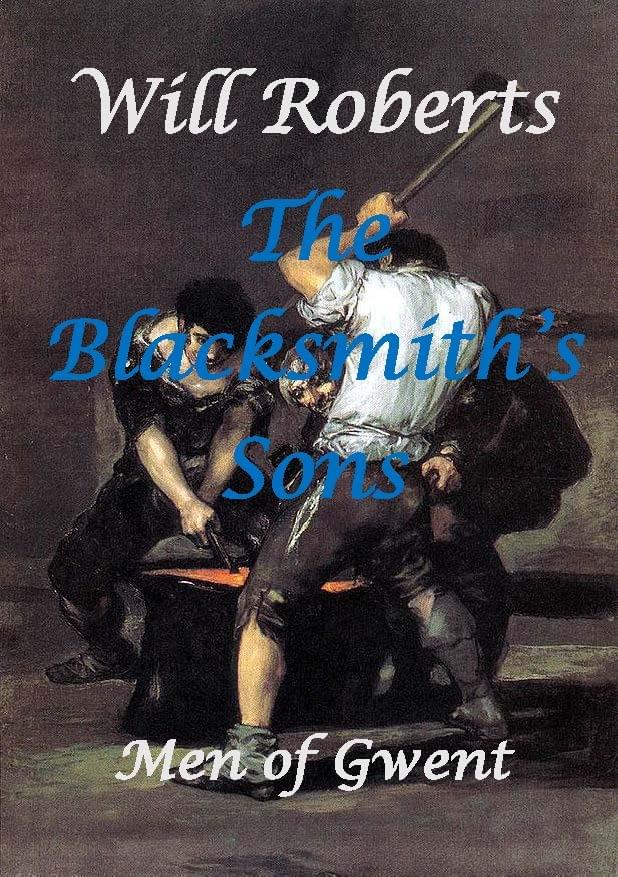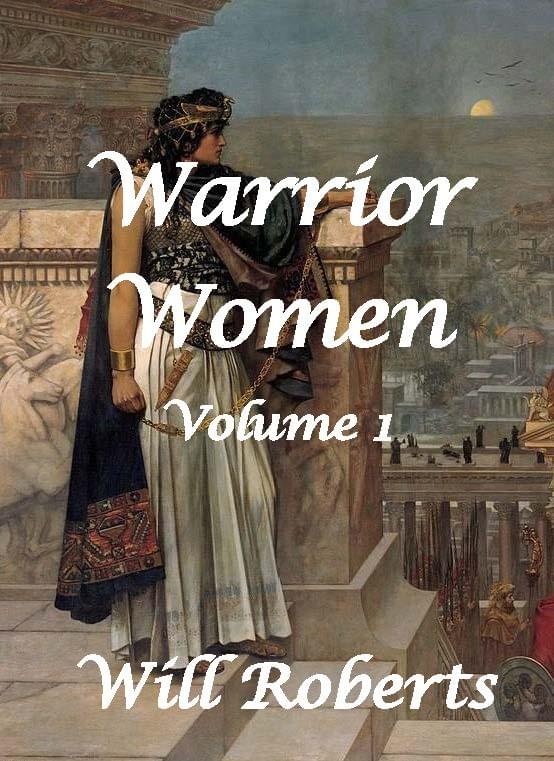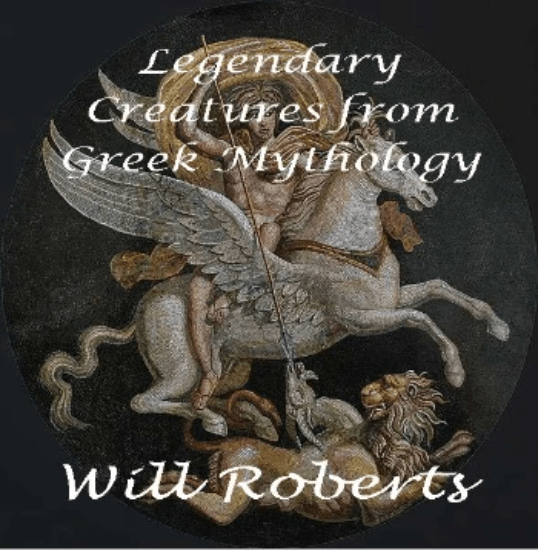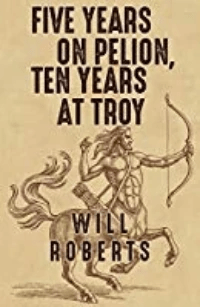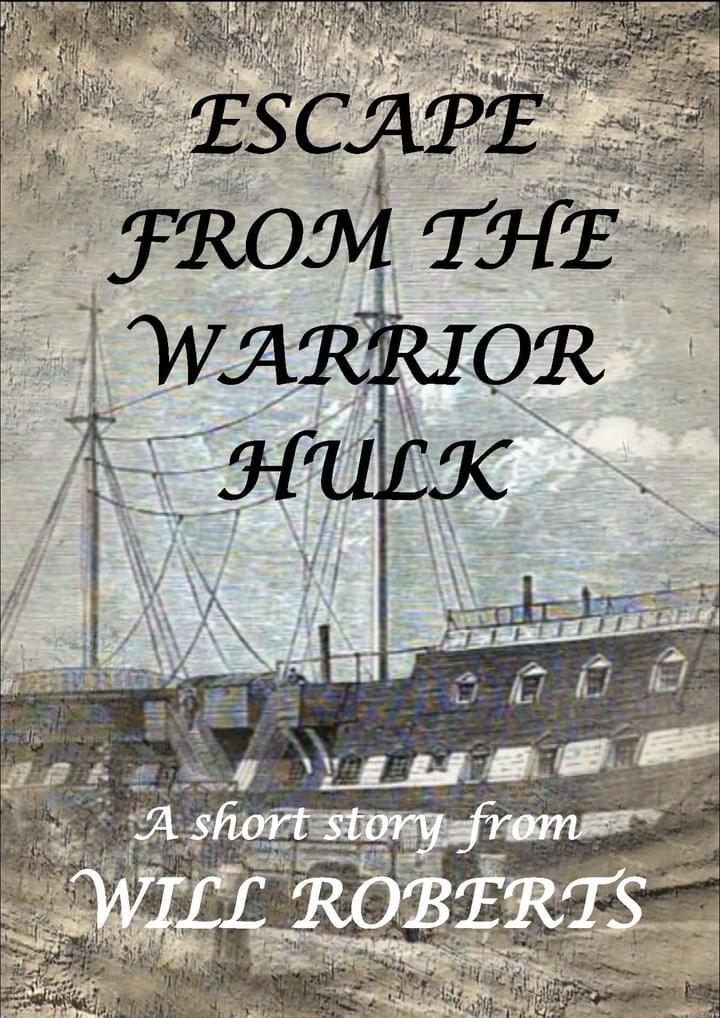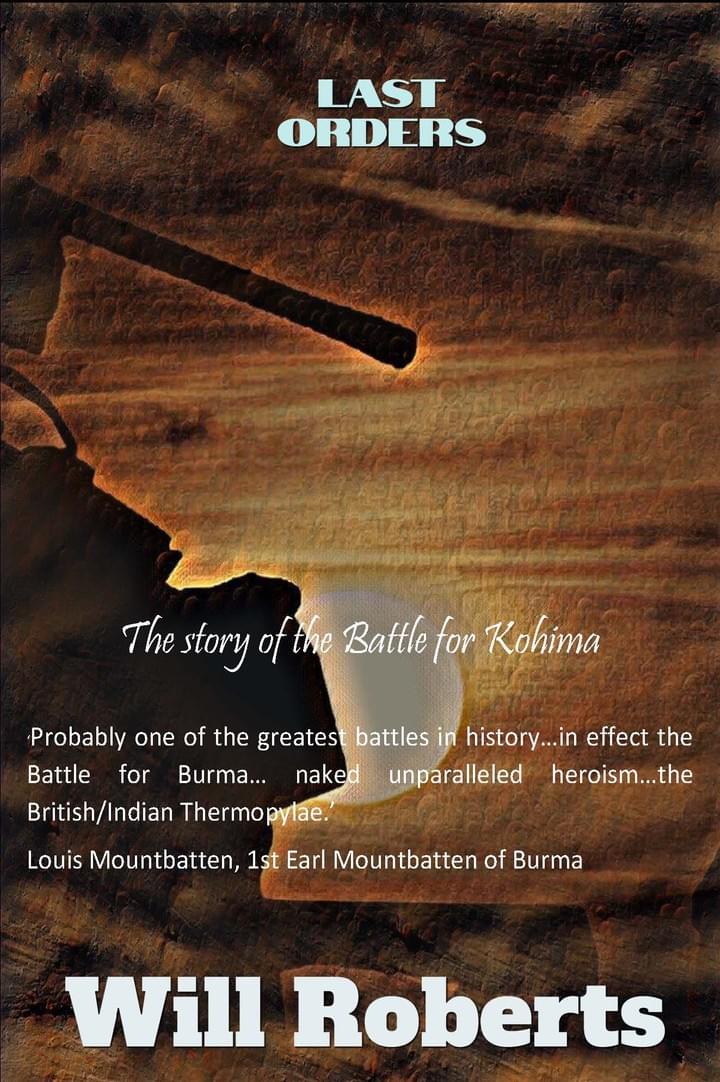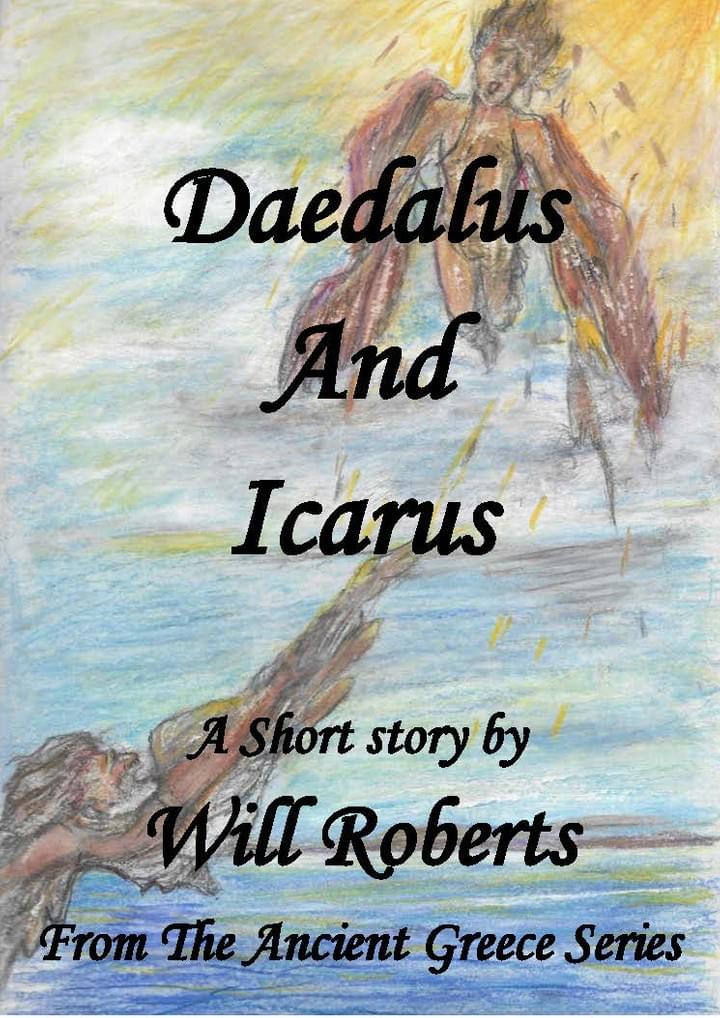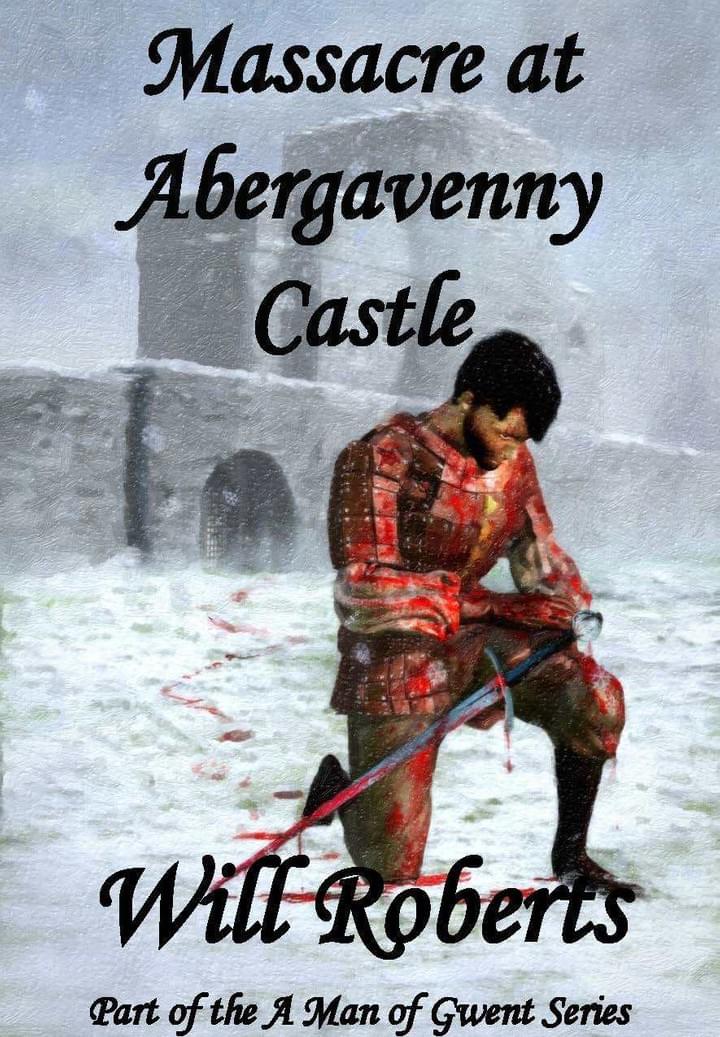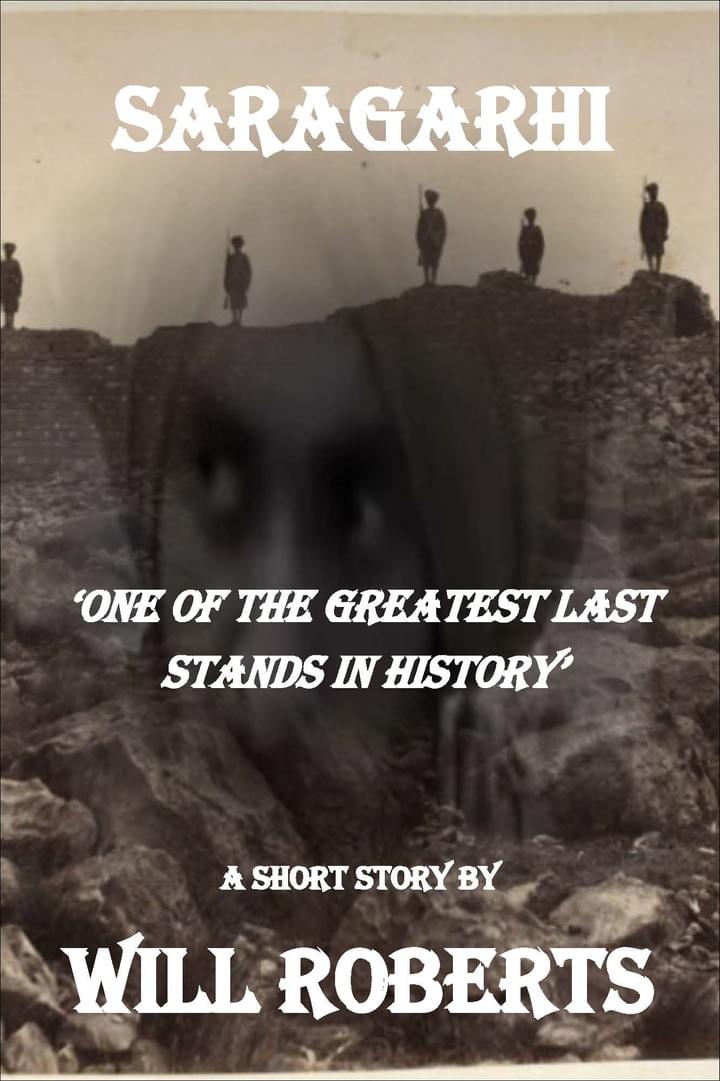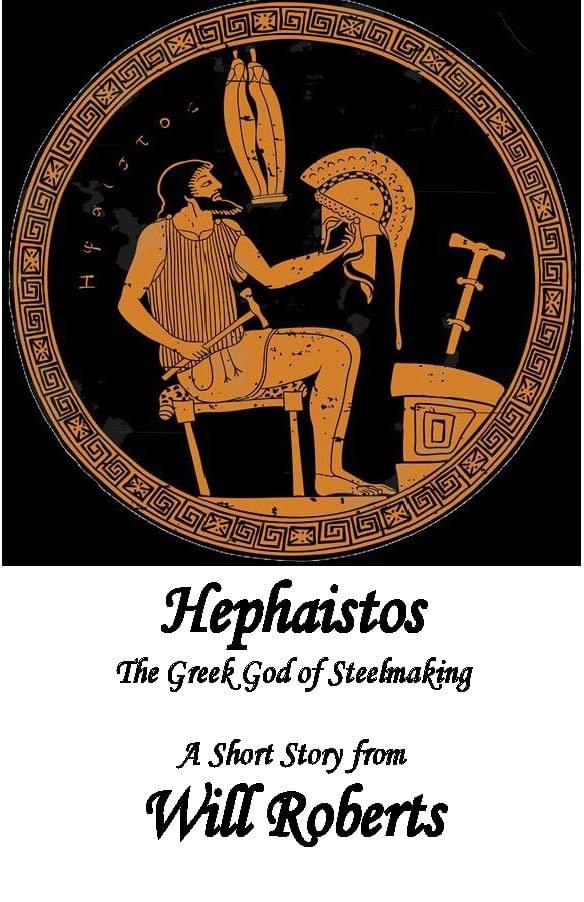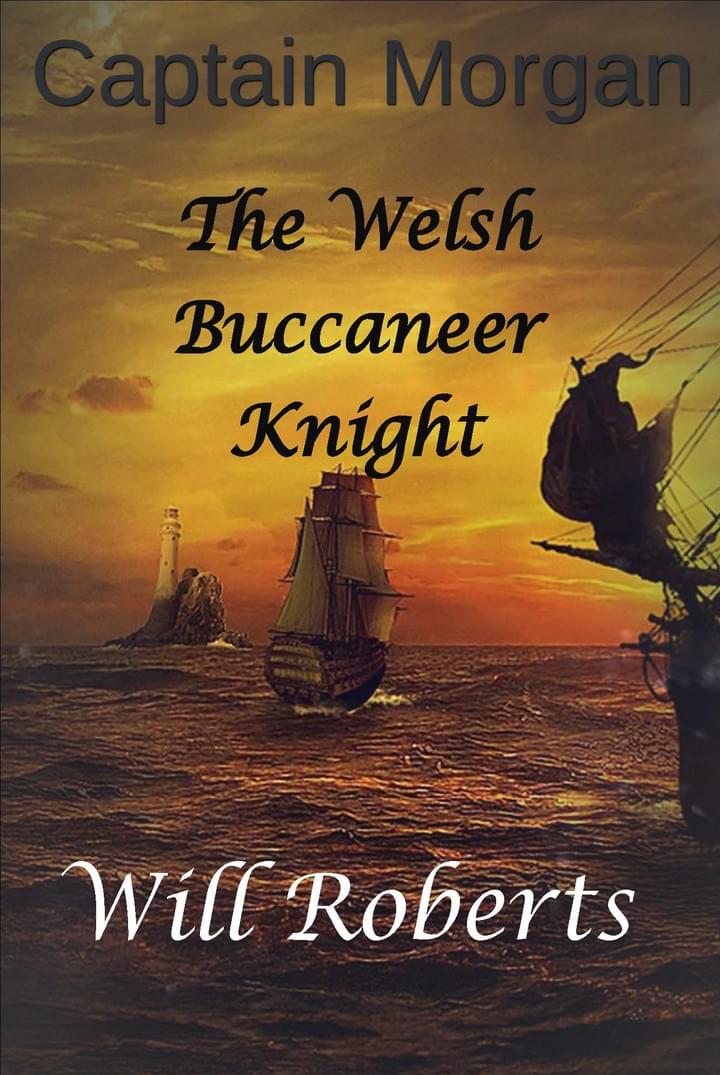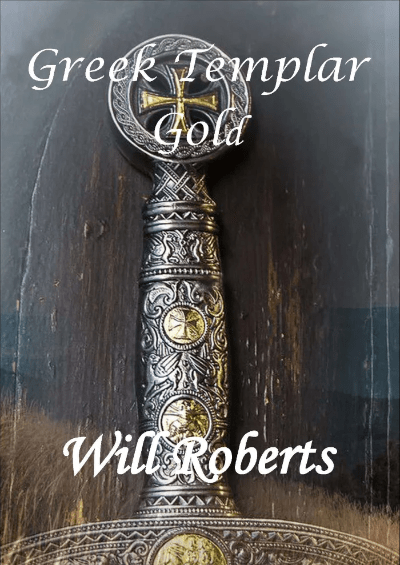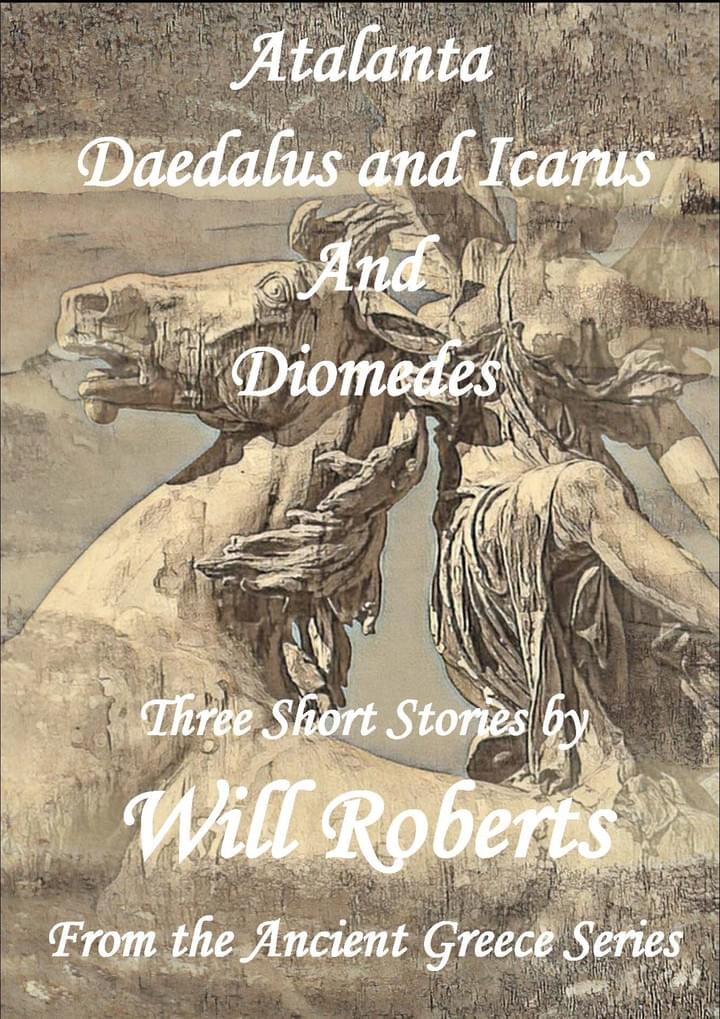

will roberts
Author
About ME
As you are probably now aware, Five Years on Pelion, Ten Years at Troy, was my first novel. I was inspired to write it after spending many years living in the Pelion region of Greece. With so many reminders of the mythical centaurs and the replica Argo sitting in the harbour in Volos, it was no surprise that my first work would be about ancient Greece.
I have spent all my working life in the steel industry - more than fifty years to date, beginning in South Wales and later as a consultant visiting many countries throughout the world.
As a proud and patriotic Welshman, I am, as will come as no surprise, a great rugby fan. In fact, I enjoy most sports, though now only as a spectator.
Any feedback on my work would be greatly appreciated. Please rate/review.
I have been uploading my work onto a new publishing site Lulu.com
The following are now available from www.Lulu.com
Last Orders
Greek Templar Gold
The Great Siege of Malta
Krugers Gold and The Boer War
The Blacksmith Sons
The Twelve Labours of Hercules
Ani - Warrior Princess
Warrior Women 1
Warrior Women 2
Legendary Creatures of Greek Mythology (Hardback and colour only)
Coming soon!
Convert or Die
The Eradication of the Cathars in The LanguedocIn the Middle Ages, the Roman Catholic Church organised many Crusades. Most were to
the Holy Land, where the Crusaders' swords were pitted against the Saracens'
scimitars.However, one crusade much closer to home is not so well-known, in which Christians fought
against fellow Christians.This was the Albigensian Crusade, or the Cathar Crusade, initiated by Pope Innocent III between 1209 and 1229 to eliminate the Cathars in the Languedoc region in southern France.
Beziers was one of the first cities in the Languedoc to suffer at the hands of the
Crusaders, where as many as twenty thousand were slaughtered and the city
destroyed. Of the twenty thousand, only around two hundred and twenty were Cathars – the rest were Catholic, many of which were slaughtered when taking refuge in the Churches of Saint Mary Magdalene and Saint Jude, including the Catholic priests.Available soon from www.Lulu.com
I am now working on something completely different to my previous historical works. For thousands of years, throughout many cultures, and across many continents, myths and legends exist of a subterranean world of a technologically and spiritually advanced civilisation.
It goes by many names, but the most popular are Shambhala and Agartha. Is it just a myth or does it really exist?
Look out for Mystery of Mysteries!
The Great Siege of Malta
The Siege of Malta was one of the most ferocious encounters of the sixteenth century. The seemingly unstoppable forces of Sultan Sulieman the Magnificent of the Ottoman Empire besieged the island of Malta,
home of the Knights of Saint John, otherwise known as the Knights Hospitallers, for almost four months.Despite being hugely outnumbered and under almost continuous bombardment, the island held out until reinforcements arrived from Europe.
The importance of the small Mediterranean island of Malta was huge. Had it fallen to Sulieman, it would have been the stepping stone that he desired to stage an invasion of firstly Sicily and then Italy –and ultimately Rome, where he dreamt of raising the Ottoman flag in Saint Peters Square.
Now available from Lulu.com


The war between Great Britain and two small South African Boer (Afrikaner) Republics—the South African Republic (Transvaal) and the Orange Free State- occurred at the end of the nineteenth century. It was inevitable that the British would achieve victory because of the vast resources of its Empire, but the Boers introduced them to tactics and warfare that shook them to the core. This was a foretaste of what would characterise the fighting of World War One.
The Transvaal became one of the wealthiest countries in the world on the discovery of massive deposits of gold – but what became of the vast amount of gold coin and bullion, which disappeared during the Boer War? Has Adam Evans found it?
Now available from Lulu publishing bookstore. www.lulu.com
Books

The Blacksmith's Sons
Welsh longbowmen played a significant part in the One Hundred Year War, with their contribution to the English victories at Crecy, Poitiers, and Agincourt has been well documented.
There are three parts to The Blacksmith Sons, which covers a period from 1360 to 1429.
The first part tells the story of two sons of a blacksmith from Caldicot in Gwent, Gethin and John, recruited to the English army after killing a deer, and their participation in an English expedition by the Earl of Buckingham to France and the failed Siege of Nantes.
In Nantes, the young archers suffer from a desperate food shortage as they watch the French city regularly resupplied with food, and one of them almost dies from dysentery, which devastates the English camp.
The second part tells of Gethin and John and their sons, Rhys and Edgar, involvement in the Owain Glyndwr uprising. John becomes a trusted captain of Owain Glyndwr after successful overseas campaigns as a mercenary in France and Spain.
In the third part, Rhys is missing the camaraderie and thrill of the battle, and keen to emulate John’s achievements, enlists in Henry IV’s army, which returns to France, and tells of his role in the Siege of Harfleur, Battle of Agincourt and the Siege of Orleans, which Joan of Arc ends. But, unfortunately, he is captured by the French during this time and spends four years in a prison cell.
Among the tales of battles fought and successful and failed sieges, there are tender moments of love found and then cruelly ripped away.
Available from Lulu.com

Warrior Women
Volume 1
From ancient times, I chose Atalanta, who played a significant role in the Calydonian Boar Hunt, and according to some of the chroniclers, sailed with Jason on the Argo in search of the Golden Fleece Artemisia, the Queen of Caria, fought for Xerxes against the Greeks in the Greco-Persian War, and Cynane, the little known half-sister of Alexander the Great, herself a fine warrior who led her army into battle.
From the Roman era; this compilation would not be complete without Boudica of the Britons, and I have included two others who resisted the Romans who were determined to impose the ways of Rome on their culture: Zenobia, Queen of Palmyra, and Mavia, of the Tanūkhids, (Saracens), who led a similar revolt against the Romans one hundred years after Zenobia.
From Asia, I chose Nakano Takeko, who fought to uphold the shogun and the samurai traditions. She led a squad of women against the riflemen of the Imperial army of Emperor Meiji, armed with only her naginata, the traditional samurai pole weapon, in the Boshin War. Also, from this region, and my favourite, I have Ba Trieu, the Korean warrior who resisted the Chinese invasion in the third century. She must have looked magnificent as she rode into battle on her great war-elephant, with her yellow cloak billowing in the breeze.
Another who would resist the Chinese, though in a different age, was Ani Pachen, the young Tibetan warrior nun, who fought the Chinese after they invaded Tibet in the 1950s, and when captured, would spend more than twenty years in prison.
Closer to home, I have included Lagertha, the Viking shield maiden; Gwenllian, the Welsh warrior princess, Maurice of Londres mercilessly beheaded, as with Boudica, it would be inexcusable not to include Joan of Arc.
From North America, I have included the Apache warrior, Lozen, another who rarely gets mentioned in history books but who fought alongside her brother, Victorio, against the United States and Mexican armies, who were determined to wipe out the Native American.
From South America, Juana Azurduy de Padilla fought in the Bolivian War of Independence against the Spanish. Achieving the rank of Lieutenant Colonel and was revered by the President, Simon Bolivar. She died penniless and forgotten.
In this collection, the continent of Africa representative is Yaa Asantewaa, of the Ashanti, who opposed the British colonisation of their home, now part of modern-day Ghana. She died in exile on the distant shores of the Seychelles Islands.
Available from Lulu.com

Legendary Creatures of Greek Mythology
Our journey through ancient Greece, takes us from the steaming swamps of Nemea where Hercules
slayed the Hydra, to the Caucasian Mountains, where an enormous eagle would eat
the liver of Prometheus, then on to Cape Verde, where Perseus would remove the awful
head of Medusa, the Gorgon, then to the edge of the ancient world, to Colchis,
where Jason would encounter the Colchian Dragon.Our journey would only be complete with encountering the mother and father of most of the twenty-four creatures included in this compilation, Echidna and Typhon.
A4 size in hardback and colour - only. Available from Lulu.com

Warrior Women 2
Twenty morestories from Will Roberts of courageous women who led men into battle,
including:Ching Shih, aprostitute from the Guandong province of China, became the leader of the Red
Fleet of pirate ships. With more than one thousand, the largest fleet of pirate
ships the world has seen and accumulated vast wealth on a remarkable journey.Queen Tomyrisof the Massagetae, a tribe of Scythians from east of the Caspian Sea. Tomyris
defeated the mighty army of Cyrus the Great of Persia. Cyrus was killed during
the battle, and Tomyris had his head removed and placed in a bucket of blood.
‘To quench his thirst for blood,’ she reportedly said.Candace ofKush was the only African leader, male or female, who successfully resisted the
Romans and maintained its territory as an independent state. Unfortunately, she
lost an eye during the conflicts and became known as ‘the one-eyed Queen of
Kush’.Saint Olga ofKiev. After her husband was horribly killed by her neighbours, The Drevilians, Olga exacted gruesomerevenge for her husband's death. Later, she converted to Christianity and was
made a saint despite her horrible history.Available from Lulu.com

Assassins Thugs and Vandals.
I had the idea of this compilation several years ago when I was researching the Knights Templar. During this research, I came across a reference to the Assassins, a secretive Islamic sect, whose name was derived from ‘hashashin’, or ‘smokers of hashish’. I thought that other words we use during an everyday conversation might have just as exciting origins, and that was the case when I looked up the origins of the words Thug and Vandal.
While on the subject of the unruly, disorderly and violent, I looked up the origins of Hoodlum, Hooligan and Ruffian, and though these origins lack the interest that Assassins, Thugs and Vandals have, are, nonetheless, still worth including in this compilation.
As we discover the origins of these words, this book will take you on a journey that starts in the rugged, almost inaccessible Elburz Mountains of northern Iran, where we meet the radical Ismailis Muslims, to India where we will travel along the hot and dusty well-trodden roads, then onto Spain and North Africa, until we arrive in Rome.
On our return journey, we will visit California, and specifically San Francisco, but this will be a brief visit because we want to avoid the riots. Then to France, Spain and Germany, before we return to London, England, where we will meet an Irish immigrant family.
Now available from Lulu.com in paperback.

Ani Warrior Princess (Short Story)
Were Amazons a Myth?
In early 2020 and in 2017, in Southern Russia and Armenia, tombs were discovered containing remains of women warriors. The women's muscle and bone structure indicate that these women were trained to use a bow and were horse riders.
Furthermore, the tombs also contained various weapons and horse riding equipment, proving that the Amazon myths were founded on reality.
My story is based on these discoveries and is the first in the Warrior Women Series.
Available from Lulu.com

Five Years on Pelion, Ten Years at Troy- From The Ancient Greece Series
The following is an official OnlineBookClub.org review of "Five years on Pelion, Ten years at Troy" by Will Roberts. February 2018]
Five Years on Pelion, Ten Years at Troy is an epic historical fiction book. The author, Will Roberts, has brought Greek mythology to life in this engrossing tale. The story is written from the viewpoint of two minor heroes, Epistrophus and Schedius.
Iphitus, the prince of Phocis, is to embark on a perilous voyage with Jason and the Argonauts. Jason's mission is to retrieve the legendary Golden Fleece in Colchis. Iphitus has arranged for his sons, Epistrophus and Schedius, to remain in Pelion and train under the guidance of Cheiron. Cheiron is a well-renowned teacher and healer. At Cheiron's cave, the boys meet Achilles, another of Cheiron's students. Young Achilles never ceases to amaze the brothers with his strength, skill, and valour. Soon, the three of them form close bonds. Cheiron, who possesses the gift of prophesying, foretells that the boys will partake in the greatest war the world has ever witnessed. This coming war is to be so great that poets and bards will sing about it long after its occurrence.
The book is divided into two parts. The first part covers Epistrophus and Schedius' training in Pelion. The second part occurs years later and covers the great war at Troy. The two parts complement each other nicely. The first part prepares readers for the second part - where most of the action occurs. For example, as Cheiron instructs the boys, he teaches them about Greek history, legends, gods, and heroes. These tales serve to introduce readers who lack a background in Greek mythology to the various myths and legends. Thus, when the action occurred in the second part, I was acquainted with some of the heroes and their history.
Most of the book is from the viewpoint of Schedius. He takes on different roles - a son, younger brother, husband, father, and warrior. These roles made him more human, more relatable. As a minor hero, he has no vanity and carries a great sense of awe for most of his fellow Greeks. Reading about these Greek heroes from his viewpoint enabled me to feel the same kind of admiration. Thus, imagining the battles by these legends was so much more thrilling!
During the war at Troy, the number of characters increases greatly. Thankfully, the author uses clear, simple language throughout the book. Otherwise, I would have been confused with trying to figure out who is who. I feel that these characters all play pivotal roles, although some only appear in a few paragraphs. They all help in the outworking of the plot.
I could go on and on about how much I enjoyed this book, but that would only spoil it! I recommend it without reserve.'I commend the author for crafting a great story. While Greek mythology is a broad and well-known topic, he is able to establish a great storyline for Schedius and Epistrophus. With the author’s extensive research, it was evident how their roles influenced other characters such as Achilles. The three forged their friendship during their time in Mount Pelion. Additionally, the book gave a refreshing air compared to other Greek mythology books I had read. Since it was from a minor hero’s perspective, I was able to relate to them more. Schedius and Epistrophus narrated what they saw, and that made this book more personal compared to other books'.
OnlineBookClub Review March 2017

One for the Road
In 1949 Joe 'Woodbine' Watts mysteriously disappeared. Joe had been involved in a jewellery robbery in London and was being pursued by two groups of people - but why? He was only the getaway driver!
Adam Evans was working in South Korea almost fifty years later and by chance, discovered the fate of his uncle, Joe.
This is something completely different to the historical stories I have been writing up to now and although it includes some historical accounts, it is a murder/mystery.
www.austinmacauley.com from
ISBN: 9781528931946 (Paperback)

Diomedes - From The Ancient Greece Series
We have all heard of the Greek Heroes Achilles and Hercules, but according to Homer’s epic story, The Iliad, set during the Trojan War, Diomedes played a far more significant role in the war for Troy than did Achilles, who was in fact absent for a substantial part of the fighting after his falling out with Agamemnon over Briseis. Apart from being a ferocious warrior, Diomedes was also a great orator, although often depicted as a reluctant debater, a special athlete, evident in his success in the games to celebrate Patroclus’s death, and also a spy: with the help of Odysseus, he slipped into Troy to steal the palladium shortly before the fall of the city.
Even before the battle for Troy, however, at the tender age of sixteen, Diomedes had avenged his father’s death by taking Thebes, together with the ‘Epigoni’, the sons of the Seven against Thebes.
Available from Lulu.com

The Twelve Labours of Hercules
One of the most recognised ancient Greek heroes is unquestionably Hercules. The son of Zeus, blessed with immense strength and unmistakable from the other heroes and demi-gods by the lion skin draped over his head and shoulders.
This work explains how he acquired this lion skin during his first labour, which offered him protection from iron and bronze weapons, right up to his final labour, where he captured Cerberus, the three-headed dog, and rescued Theseus from Hades, and why he was forced to perform his Twelve Labours.Available from Lulu.comm
Escape From The Warrior Hulk

While the use of decommissioned ships as prison ships or prison hulks, has been practiced by many nations over the years, it was widespread in Great Britain in the eighteenth and nineteenth centuries, when, after the defeat in The American War of Independence, and subsequently the loss of a colony for the deportation of felons, penitentiaries became full to overflowing. The intention was to use Prison ships for a short period, but eighty years later they were still being used.
Will Roberts has created a story that vividly describes the conditions that existed on these extremely crowded prison ships, and, as is the norm with Will Roberts’ novels, takes the reader back to the era in which the story is set, on this occasion, the mid-nineteenth century.
Available from Lulu.com

Last Orders
Adam Evans was working in Burma when an airplane that was shot down during the Second World War was discovered when clearing the jungle. Adam then meets an Englishman, who served in the British Army during the Burmese campaign. The Captain, as the locals call him, fought at the historical battle for Kohima, across the Burmese border in India. He, and one of his subordinates, Terry Thompson, recount the gruesome story of ‘The Siege of Kohima,’ by the Japanese.
Adam also locates a precious Russian treasure, that has been lost for almost a hundred years, during his investigations.
Available from Lulu.com
Available from Amazon Kindle and in paperback

The classic story of Daedalus, the brilliant engineer who built The Labyrinth to house the Minotaur for King Minos, but who fell out of favour and was imprisoned in a tower. He made wings of wax and feathers for his son Icarus and himself and flew away from the island and their captors. Unfortunately, despite warnings from his father, Icarus flew too close to the sun, the wax holding his wings together melted and he plunged into the sea.
Available from Amazon

The Slaughter of the Bards
After suppressing a minor rebellion in Wales in 1277, Edward invited the Welsh nobles and their Bards, to Montgomery Castle, for a banquet and a festival of music and song. When the Welsh Bards refused to sing to celebrate his victory but instead sang of Welsh victories, he burned them at the stake. He then dispatched his men to the four corners of Wales to seek out and burn, all the remaining Welsh Bards.
In all, it is told, five hundred bards were murdered in this barbaric manner.
In Wales and throughout the other Celtic nations, memorable events, deaths, and victories in battle, were proclaimed by bards in song and verse, rather than written in books or on manuscripts, as the majority of the populace could neither read nor write.
Edward, the first of England, was infuriated by the unceasing revolts and uprisings by the Welsh but was determined to control them, not only economically and militarily, but culturally, and to this end, he decided to eliminate the very core of this culture and that which he deemed responsible for inciting the revolts against English rule, The Bards.
Available from Lulu.com

Blaenavon Of Iron and Steel.
Blaenavon - Of Iron and Steel was Will Roberts’s second short story after, Massacre at Abergavenny Castle and part of the A Man of Gwent Series Volume One. It was rewritten and re-edited in 2020 and this is the revised edition.
The removal of phosphorus from iron, was hugely important in iron and steel making, and Sydney Gilchrist Thomas and Percy Gilchrist achieved something that many had failed to accomplish over more than twenty years.
As those who are familiar with my work will know, I have a passion for rugby and steelmaking, and where possible, I try to include both in my novels. As it happens Blaenavon Rugby Club’s first game coincided with the ironmaking developments that were going on in Blaenavon at the same time, as did Wales’s first international against England, but the least said about this the better!
The mining disasters that I have mentioned also occurred on the dates that have been included in this work.
Apart from the central theme of this work, the removal of phosphorus from iron, I have also tried to illustrate the living conditions that were prevalent, not only in the Welsh valleys but throughout the UK, in the late nineteenth century.
(Rewritten and Re-edited 2020)
Available from Lulu.com

Massacre at Abergavenny Castle (Short Story)- A Man of Gwent Series
On Christmas day at Abergavenny Castle in 1175, The Baron of Abergavenny, William de Braose committed one of the most heinous acts in Welsh history.
In a period where treachery, deceit and slaughter were common place, this must rival any of the monstrous deeds that were carried out during these extremely violent times.
William de Braose invited Seisyll ap Dynfwal, his son Geoffrey and all the noblemen of Gwent to Abergavenny Castle for a reconciliatory Christmas dinner.
While the Men of Gwent were enjoying the excellent banquet and drinking de Braose's fine ale, the doors were thrown open and de Braose's soldiers rushed in and slaughtered all the Welsh in attendance.
This my version of what may have happened on this bloody Christmas day in 1175 and the events leading up to it.
Rewritten and re-edited 2020
Available from Lulu.com

Saragarhi (Short Story)
1897. India’s North-West Frontier. The British had been relatively successful in subduing the Afghan
tribes in this volatile region, but the normally independent Afridis and Orakzai, Pashtun tribes had joined forces, and their army of twenty-five thousand posed a severe threat.Saragarhi, a small outpost situated between two more prominent forts in the Samana Mountain region, was one of the first outposts to be attacked by the Pashtuns.
Just twenty-one Sikh soldiers manned the outpost, but their small number managed to hold the outpost for six and half hours against overwhelming odds – precious time for reinforcements to arrive.
Available from Lulu.com

Hephaistos (Short Story).
Hephaistos is one of the least known of the ancient Greek gods, but whenever the gods required a sword, armour, or a shield, they would go to Hephaistos, the god of fire, smiths, craftsmen, sculpture, and steelmaking. Hence my interest in this much-maligned fabricator of the superb armour and shield that Achilles wore when he avenged his beloved Patroclus' death at Troy.
Available from Lulu.com

Captain Morgan
The Welsh Buccaneer Knight
Harry Morgan was from the eminent Morgan family of Monmouthshire, who as a young boy left home to seek his fortune. How he came to arrive in the Caribbean is unclear, but he would unquestionably leave his mark on the world. He made his fortune, but while achieving this, he became a legend to the people of Jamaica and was knighted by the King of England.
His expeditions to take the Spanish cities, such as Portobello, Maracaibo, Gibraltar and Panama City, are written into folklore.
Available from Lulu.com

Greek Templar Gold
Acre, 1291. The city is besieged by Mamluks and about to fall. Two Knights Templar ships containing a vast amount of treasure and an ornate box containing the Holy Grail manage to escape the siege and sail for Cyprus. But what became of the treasure and ornate box?
Seven hundred years later, after discovering two gold coins on the seabed off a remote and uninhabited Greek island, Adam Evans puts together the cryptic clues that have been left, and discovers the long lost treasure, but has he found the Holy Grail?
Now Available in Paperback and Kindle.
Available from Lulu.com

Atalanta, Daedalus and Icarus and Diomedes
From the Ancient Greece Series
Atalanta
Abandoned on a mountainside as a baby by her father, Atalanta was reared by a bear and later by two hunters, before becoming the best tracker in Greece as well as an excellent archer, a wrestler, and athlete. She also participated in The Caledonian Boar Hunt, and according to some accounts sailed with Jason in the Quest for the Golden Fleece.
Daedalus and Icarus
The classic story of Daedalus, the engineer and inventor, who built The Labyrinth to house The Minotaur, assisted Theseus in his escape from Knossos after he killed the Minotaur, and then escaped the island by making wings of wax and feathers for himself and his son, Icarus.
Diomedes
Diomedes was one of ancient Greece’s fiercest warriors and played a significant part if the fall of Troy, probably more so than Achilles, who was absent for most of the time after falling out with Agamemnon over Briseis. Before the battle for Troy, he had avenged this father, who had with the Seven Against Thebes, failed to take the city. Diomedes, along with the Epigoni, the sons of the seven, succeeded where their fathers had failed.
‘He fights with rage and fills men's souls with dread. I hold him greatest of them all; we did not fear even their great champion Achilles, son of an immortal though he be, as we do this man: his rage is beyond all bounds, and there is none can vie with him in prowess."
(Hector’s brother Helenus describing Diomedes. The Iliad Book VI)
Available from Lulu.com

Assassins Thugs and Vandals.
I had the idea of this compilation several years ago when I was researching The Knights Templar. During this research, I came across a reference to the Assassins, a secretive Islamic sect, whose name was derived from ‘hashashin’, or ‘smokers of hashish’. I thought that other words we use during an everyday conversation might have just as exciting origins, and that was the case when I looked up the origins of the words Thug and Vandal.
While on the subject of the unruly, disorderly and violent, I looked up the origins of Hoodlum, Hooligan and Ruffian, and though these origins lack the interest that Assassins, Thugs and Vandals have, are, nonetheless still worth including in this compilation.
As we discover the origins of these words, this book will take you on a journey that starts in the rugged, almost inaccessible Elburz Mountains of northern Iran, where we meet the radical Ismailis Muslims, to India where we will travel along the hot and dusty well-trodden roads, then onto Spain and North Africa, until we arrive in Rome.
On our return journey, we will visit California, and specifically San Francisco, but this will be a brief visit because we want to avoid the riots. Then to France, Spain and Germany, before we return to London, England, where we will meet an Irish immigrant family.
Now available from Lulu.com in paperback.
S
reach out
As a new author, any feedback would be appreciated,
© 2016


